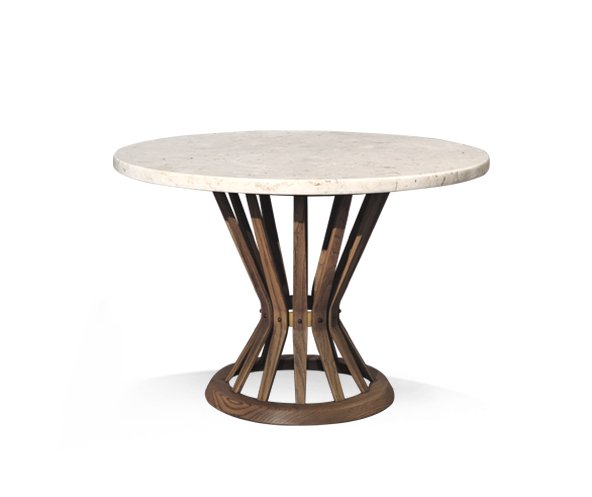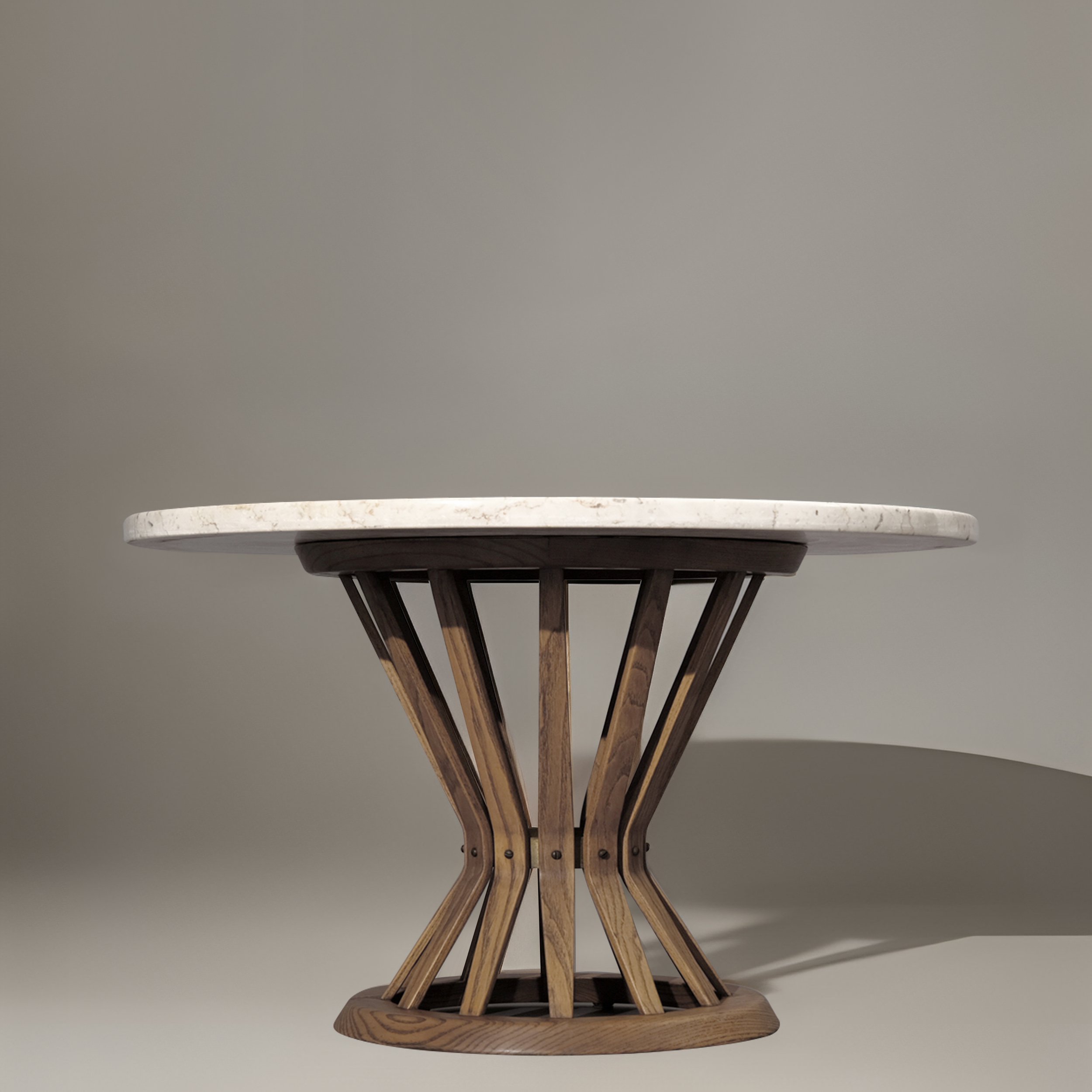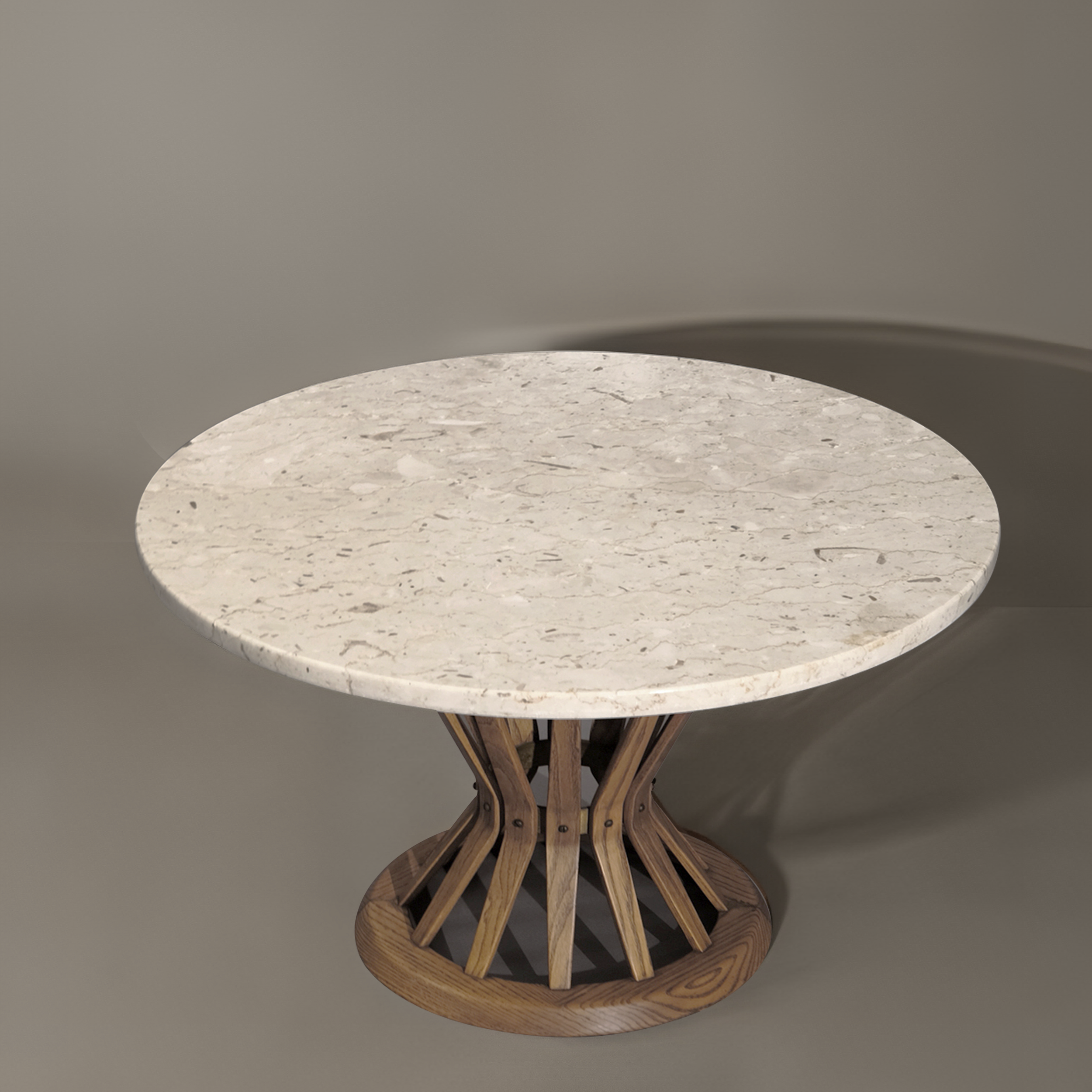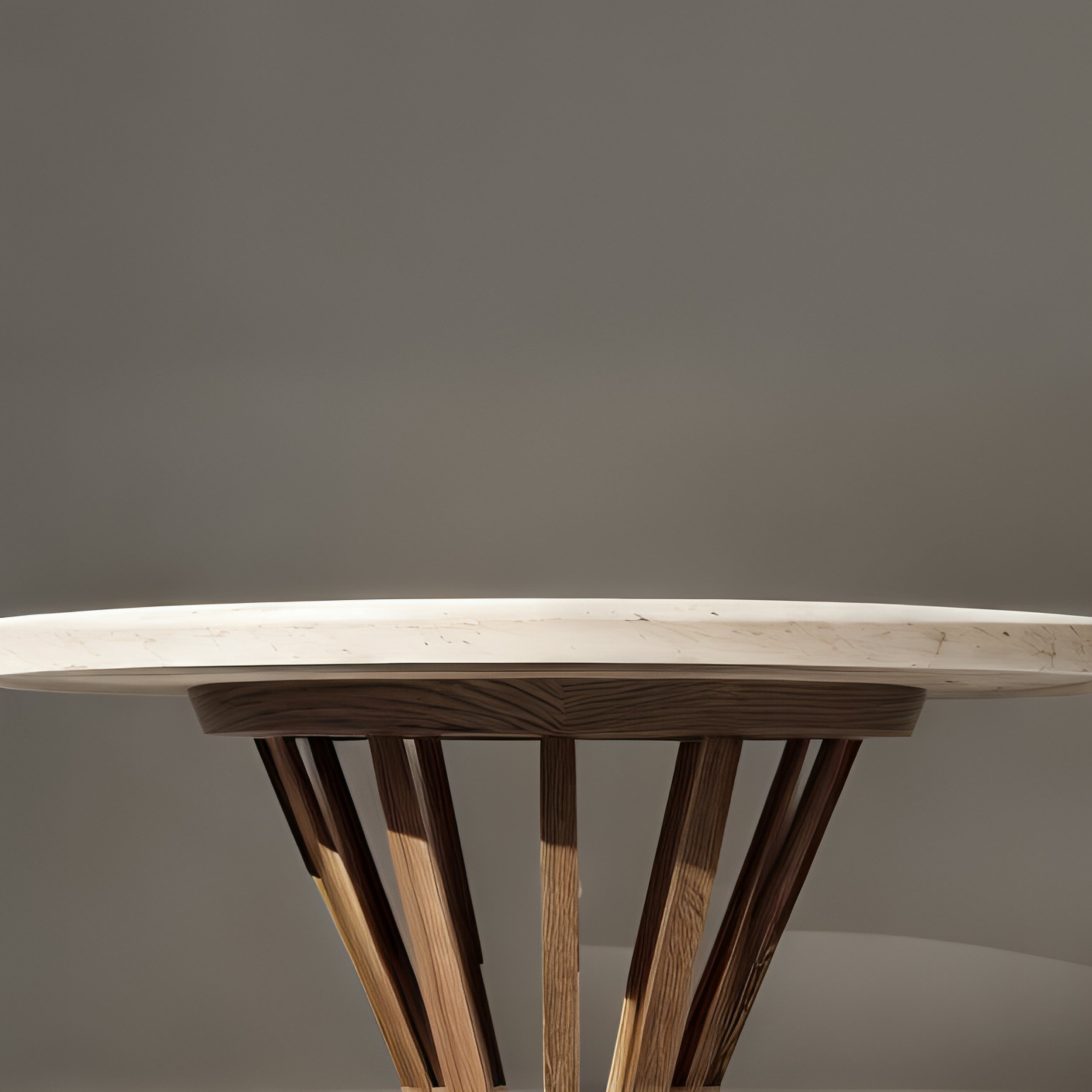 Image 1 of 6
Image 1 of 6

 Image 2 of 6
Image 2 of 6

 Image 3 of 6
Image 3 of 6

 Image 4 of 6
Image 4 of 6

 Image 5 of 6
Image 5 of 6

 Image 6 of 6
Image 6 of 6







Side Table by Edward Wormley for Dunbar
DUNBAR / CIRCA 1950s
ABOUT
The "Sheaf of Wheat" side table, model No. 5478A, is constructed from Natural Oak and features a travertine top. This exceptional piece, characterized by its distinctive creativity, was designed by Edward Wormley for Dunbar in the 1950s. The shape of this table is visually impressive, representing an iconic design from one of the foremost designers of the mid-century modern era. It incorporates a sculpted base resembling a wheat bundle, complemented by a brass ring, embodying a refined approach to modernism. The Dunbar tag is affixed to the top of the base, attesting to its authenticity.
DUNBAR / CIRCA 1950s
ABOUT
The "Sheaf of Wheat" side table, model No. 5478A, is constructed from Natural Oak and features a travertine top. This exceptional piece, characterized by its distinctive creativity, was designed by Edward Wormley for Dunbar in the 1950s. The shape of this table is visually impressive, representing an iconic design from one of the foremost designers of the mid-century modern era. It incorporates a sculpted base resembling a wheat bundle, complemented by a brass ring, embodying a refined approach to modernism. The Dunbar tag is affixed to the top of the base, attesting to its authenticity.
DUNBAR / CIRCA 1950s
ABOUT
The "Sheaf of Wheat" side table, model No. 5478A, is constructed from Natural Oak and features a travertine top. This exceptional piece, characterized by its distinctive creativity, was designed by Edward Wormley for Dunbar in the 1950s. The shape of this table is visually impressive, representing an iconic design from one of the foremost designers of the mid-century modern era. It incorporates a sculpted base resembling a wheat bundle, complemented by a brass ring, embodying a refined approach to modernism. The Dunbar tag is affixed to the top of the base, attesting to its authenticity.
DETAILS & DIMENSIONS







CREATOR: Edward Wormley (Designer), DUNBAR Furniture (Manufacturer)
DIMENSIONS: Height: 19.3 in. (49 cm) Diameter: 29.5in. (74.93 cm)
DATE OF MANUFACTURE: 1950s
STYLE-MOVEMENTS: Mid-Century Modern (Of the Period)
PERIOD: Mid-20TH Century
COUNTRY OF ORIGIN: United States
MATERIALS AND TECHNIQUES: Marble, Brass, Oak
CONDITION: Excellent. Good, wear consistent with age and use
NUMBER OF PIECES: 1
LEAD TIME: Available Now
PRODUCT REFERENCE: SQ2363645
SHIPPING & RETURN
-
Declare USA is delighted to link your expectations to ours, ensuring your shipping and delivery experience is pleasant and seamless.
All our vintage furniture is fully packaged for safe transit across the continental US and handled by elite third-party delivery carriers via white-glove service to ensure your order reaches you safely and on time.
_
Please allow 3 to 5 weeks for your furniture to arrive.
International shipping?
Contact us via email for more information.
-
Branford, CT, US 06405 (Warehouse)
-
We accept returns and cancellations on most items, although the request must be submitted via email within 48 hours of delivery or in advance.
Custom items and Special orders cannot be returned. Please read our full policy here.
_
If you are not completely satisfied with your purchase, please get in touch with support@declareusa.com

About The Designer:EDWARD WORMLEY
Edward J. Wormley was born in Oswego (1907), a village in rural Illinois. He discovered early on that he wanted to become an interior decorator, studying via a correspondence course and beginning to pursue his dream speedily. Later, he trained at the Art Institute of Chicago before traveling to Europe in 1931, where he met heroes of the modernist movement like Le Corbusier and Émile-Jacques Ruhlmann. Wormley’s love of hand-crafting positioned him inside the DUNBAR company. His position as the chief designer would last four decades, producing approximately 100 pieces each year. Inspired by the Arts and Crafts movement, his 1957 ‘Janus collection fused antique influences with contemporary, angular shapes and incorporated vintage elements, including old Japanese woodblocks. His designs are said to honor tradition, reimagining forms seen in 19th-century German, Rococo, and Georgian design.
FOLLOW US ON INSTAGRAM 




